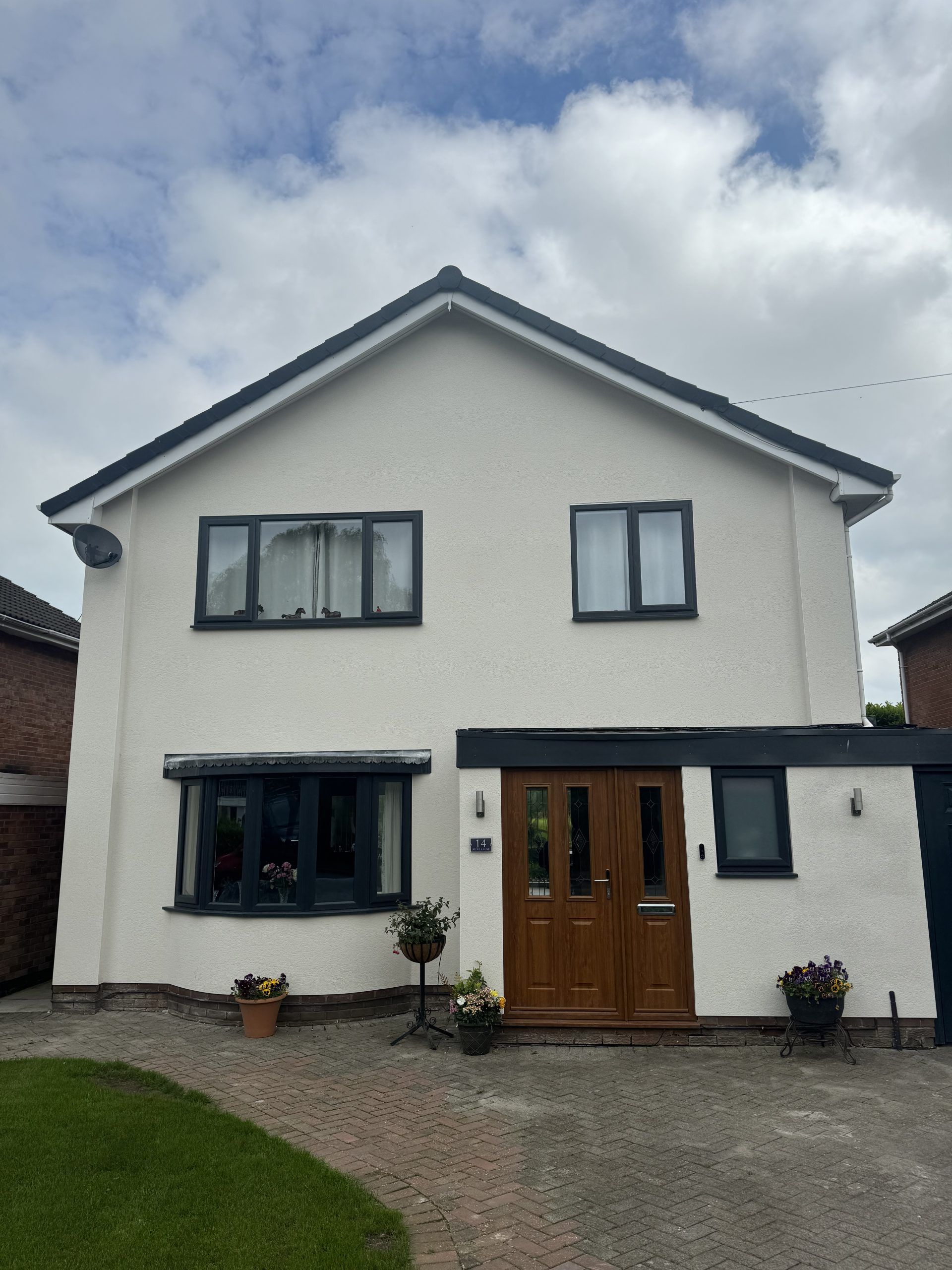
What are the types of external rendering?
External rendering is a powerful way to protect and transform your property. But with a range of different materials available, choosing the right one can feel daunting. Each type of render has its own unique properties, benefits, and aesthetic qualities. Understanding the differences is key to making the best decision for your home.
Here is a guide to the most common types of external rendering.
1. Monocouche Render
The name “monocouche” translates from French to “single layer” or “one coat.” This type of render is known for its efficiency and durability. It’s a pre-coloured, cement-based render that is applied in a single coat and then scratched back to a smooth, flat finish.
Benefits: Highly durable, weather-resistant, and available in a wide variety of colours, eliminating the need for painting. It allows the walls to “breathe,” reducing the risk of damp.
Best For: Modern properties and new builds where a uniform, coloured finish is desired.
2. Traditional Sand and Cement Render
This is the classic, time-tested rendering method. It consists of a mix of sand, cement, water, and sometimes lime. It is typically applied in multiple coats and finished with a top coat that can be painted in any colour.
Benefits: Cost-effective, very strong, and highly versatile. It provides a solid base that can be painted or have other finishes applied.
Best For: All types of properties, particularly older homes that require a breathable finish.
3. Silicone Render
Silicone render is a modern, high-performance material that offers exceptional flexibility and a self-cleaning function. It’s often applied as a thin top coat over an existing render system.
Benefits: Extremely flexible, which prevents cracking. Its silicone-based properties make it highly water-repellent and resistant to algae and dirt, keeping the finish looking clean and fresh for longer.
Best For: Properties exposed to harsh weather conditions, and those that want a low-maintenance, long-lasting finish.
4. Acrylic Render
Acrylic render is a synthetic, polymer-based render known for its vibrant colours and high resistance to impact. It is applied in a thin coat and is very durable.
Benefits: Excellent colour retention, impact resistance, and water repellency. It dries quickly and is a good option for a textured finish.
Best For: Applications where a tough, durable, and coloured finish is required, and on properties that may be subject to minor impacts.
5. Lime Render
Used for centuries, lime render is a traditional material made from a mix of lime, sand, and water. It is a highly breathable material, making it ideal for older and historic buildings.
Benefits: Extremely flexible and breathable, which allows moisture to escape from the walls, preventing trapped damp. It is also an eco-friendly option.
Best For: Historic buildings, listed properties, and period homes where preserving the original structure is crucial.
Making Your Choice
The best render for your property will depend on several factors, including the age and construction of your building, your budget, and the desired aesthetic. Consulting with an expert can help you understand which material will provide the best long-term protection and finish for your home.


